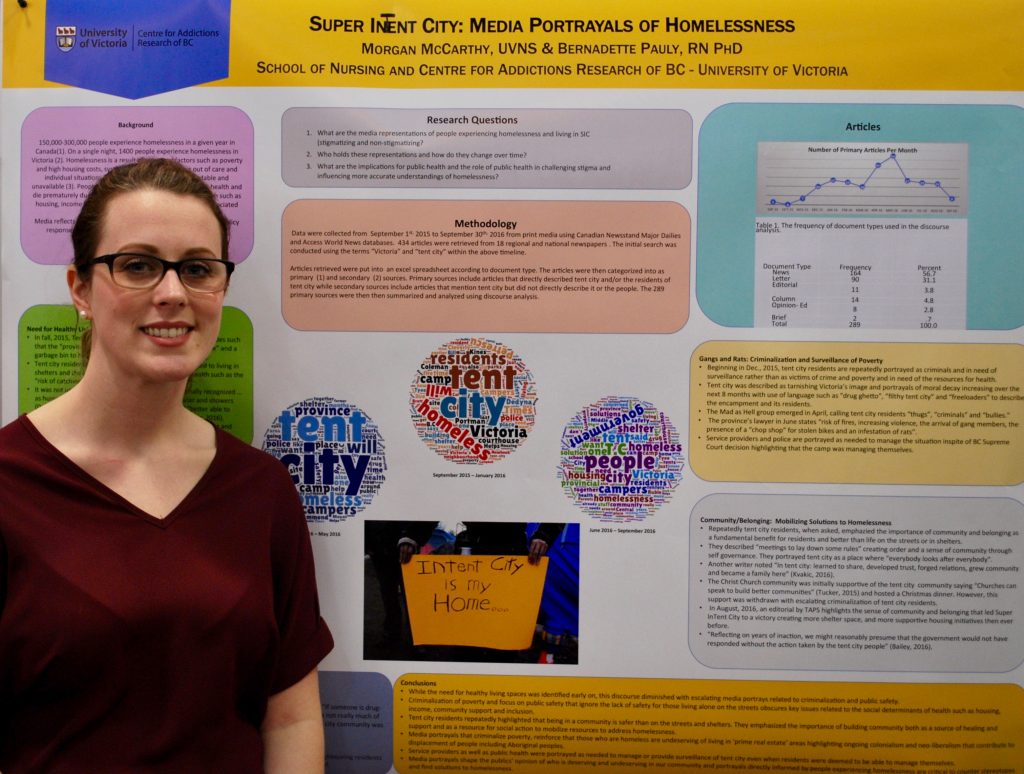Morgan McCarthy
4th Year Nursing
Supervisor: Bernadette Pauly, RN, PhD
In Canada, as many as 300,000 people experience homelessness in a given year. There are more than 1400 people experiencing homelessness on a single night in Victoria, BC. People who are homeless experience poor health and premature death due to lack of the basic determinants of health such as housing, income, and social supports. Homelessness is the result of structural and systemic factors that intersect with individual situations and is associated with multiple sources of stigmas that can impact action. Media reflects and contributes to public opinions and influences policy responses to homelessness often reproducing stigma and stereotypes. The purpose of this project was to analyze print media representations portraying Super Intent City, a Victoria homeless encampment. We sought to answer the following questions: What are media representations of people experiencing homelessness? Who holds these representations and how do they change over time? What are the implications for public health and the role of public health in challenging stigma and influencing more accurate understandings of homelessness? Data were collected from September 1st, 2015 to September 30th, 2016 from 18 regional and national newspapers. The data were reduced to 289 primary newspaper articles and then analyzed Using discourse analysis. Four discourses were identified: 1) the need for healthy living spaces, 2) public safety issues, 3) criminalization and surveillance of poverty, and 4) community/belonging. Residents of Super Intent City were key voices in raising issues related to the structural and systemic factors that produce homelessness including the need for healthy living spaces, community well-being and belonging. Over the time of the encampment, stereotypes that criminalize homelessness obscured the voices of residents and the need for healthy living spaces, home and belonging as solutions. Portrayals of homelessness from people with lived experience are critical to counter stereotypes and identify real solutions to homelessness.

From the 2017 Spring & Summer Communiqué — Research Edition
Recent Comments